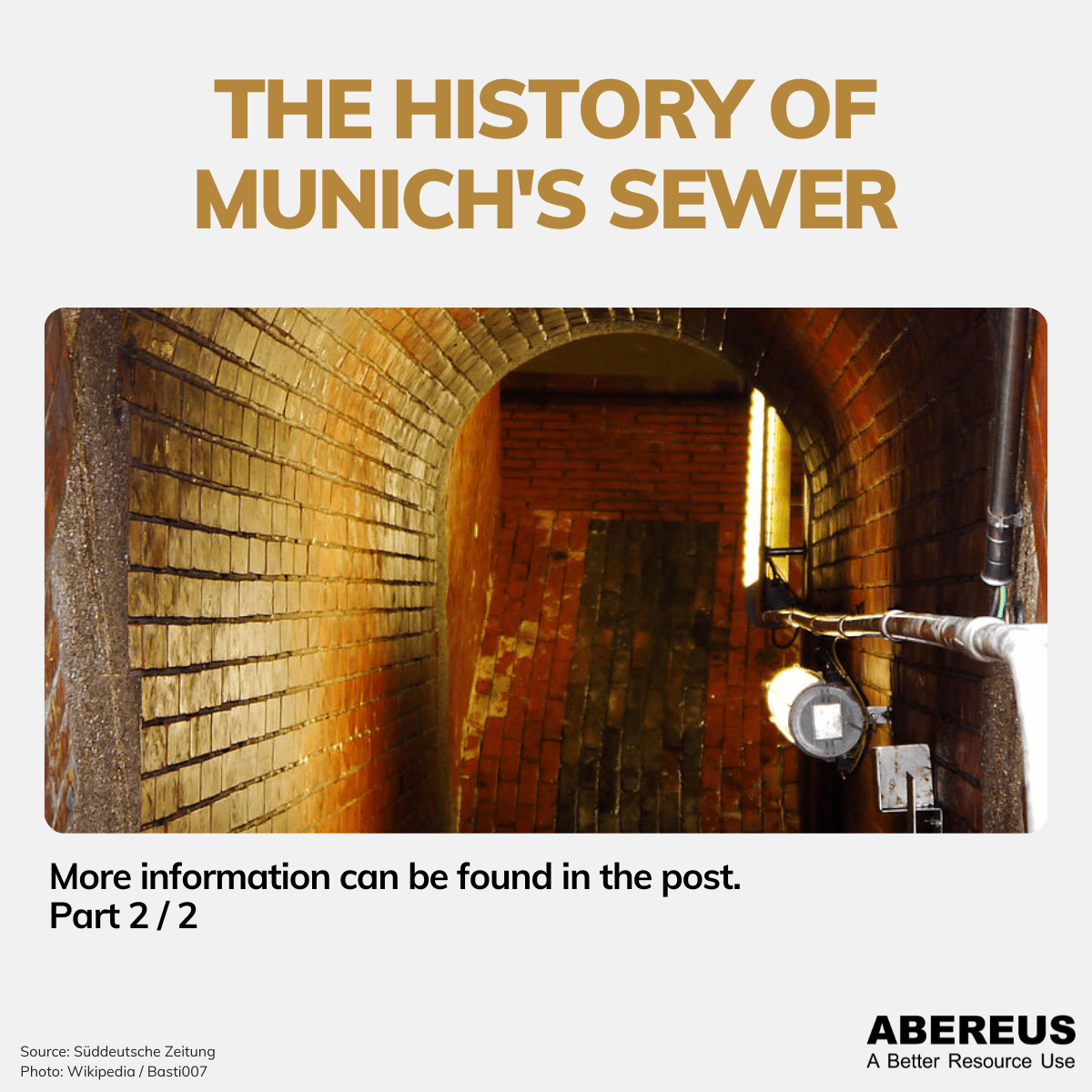The history of Munich’s sewer (Part 2)

Date
As we all already know from our first post about Munich’s sewage system it was created over 200 years ago and only happened after a big epidemic catastrophe in which Queen Therese of Bavaria died. 1900 around 78% of the 480.000 citizens of Munich were connected to the sewer.
During that time, all the wastewater was just added to the Isar river in the north of Munich. The city’s sewage system was built with a small decline to the north. Therefore, it didn’t need a lot of pumps or other technical equipment to channel the water in that direction. People that lived up the river, i.e., in Freising and Landshut protested about all the dirt in the water and its smell. In 1926, the first wastewater treatment plant “Gut Großlappen” was built. It is in the north of Munich, close to the Allianz Arena.
With more people living in Munich, the sewage system also grew systematically. More and more wastewaters had to be treated. As a result, the treatment plant couldn’t clean all the water. A second plant was added in 1989. It is called “Gut Marienhof” and it is further north (and downstream) than “Gut Großlappen”.
In 1998, another big milestone took place. One of the first factories to burn the sewage sludge in bigger numbers was introduced to “Gut Großlappen”. This generates energy for the treatment plant and the sludge doesn’t have to be deposited afterwards. In 2006, around 99,9% of the citizens of Munich were connected to the sewage system. Some smaller communities to the north and especially to the south of Munich are also connected. Their wastewater is also treated in the two plants. Until now, the whole sewer is a mixed sewer system. That means that rain and wastewater is channeled and treated together in the plants.
For more information around Munich and sewer systems, get connected and join us for a better resource use.
Source: https://www.sueddeutsche.de/muenchen/abwassernetz-17-stufen-in-den-muenchner-untergrund-1.3918829-2



